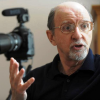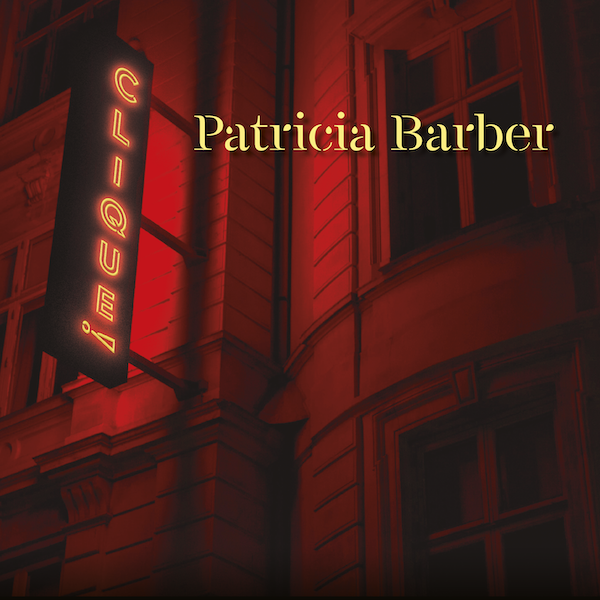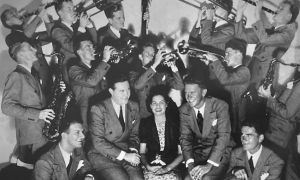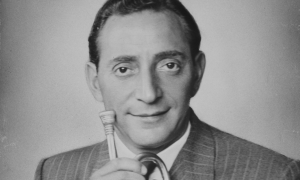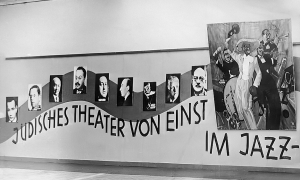Home » Jazz Articles » History of Jazz » The New York Jazz Museum: 1972-1977
The New York Jazz Museum: 1972-1977
How different from today!
I started reading the Village Voice newspaper and saw a two-line ad on the back page. A man wanted to start a hot jazz organization to produce jazz concerts in New York City. I called him, we met and we decided to see if we could find a place or places to do so. We contacted some jazz clubs and thought that we could use their facilities on a Sunday afternoon, when they were not operating.
The man who placed the ad was named Frank Bristol, and he was in the printing business. However, shortly before we were even ready to operate, he suddenly passed away. I was on my own.
My first event was to be a record listening session at the Jazz Record Center on West 47th Street. The owner was providing the space for free, figuring that people coming there would buy his records. When response from publicity indicated that the space would be too small, we rented space at a nearby hotel. The owner had suggested that record collector Jack Bradley would be the right person to present the program. Jack then became my partner and later helped me establish the New York Jazz Museum. I went to the library and found a form for a press release, which I then wrote and sent to various media and sent flyers I made up to the mailing list that the Jazz Record Center provided. About 75 people came to the event and many became members of our new organization.
Monthly events were eventually held at jazz clubs and other indoor and outdoor facilities. During this time, I formed the New York Hot Jazz Society, Inc., a domestic nonprofit corporation I incorporated in New York City on December 27, 1967.
The first event, held in November 1967 at the Top of the Gate in Greenwich Village, featured Willie "The Lion" Smith as guest speaker and musical entertainer. After the concert, I drove Willie home to Harlem. He and my father sat in the back seat and conversed in Yiddish. Willie claimed to have been bar mitzvahed when he had grown up with close ties to a Jewish family.
Many of the groups presented by the Society were genuine all-stars featuring some of the legendary artists of the '20s, '30s, '40s and '50s. Many of them played together for the first time. These events received laudatory reviews in The New York Times, Downbeat and The New Yorker.
The New York Times, June 10, 1968
The Hot Jazz Society Brings Old 52d Street to the Half Note By John S. Wilson"It seemed almost like 52d Street in the nineteen-forties last night at the Half Note—but cleaner. The occasion at the jazz club at Spring and Hudson Streets was the monthly jam session of the New York Hot Jazz Society...."
During this time, I still had to practice law in order to earn a living. One day I saw an article in the newspaper about the eviction of Charles Mingus from his loft in lower Manhattan. I managed to contact him and said that I would represent him without fee. He came to my office. We spoke for about an hour, and as he left, he handed me a check for $100. I told him that I offered to represent him without a fee. He insisted that I take the money, which I did. During the time I represented him, he said he wanted me to sue the state of California for failing to educate him. He also said that Nat Hentoff and I were the only white people he ever liked! I helped him with his licenses and some other work. We got along well.
I went on to meet and represent some other jazz musicians and a man named Harrison Smith, a composer and (he claimed) the manager of Jelly Roll Morton. He came to my office in a handsome suit and hat. We sat and talked for more than an hour as he fascinated me with stories of his work with Morton and others.
At that time, I heard that Clay Watson, former director of the New Orleans Jazz Museum, was looking into the possibility of establishing a jazz museum in New York. As the Society was growing in its membership and the concerts were exciting, we wanted to do more. In order to memorialize the contributions of America's jazz artists, we decided to establish a permanent facility for current and future generations to learn about this neglected aspect of our cultural history. We began to develop a fund-raising campaign for the New York Jazz Museum.
We received a grant from the New York State Council on the Arts. It was for $17,250 and would enable us to plan, solicit materials and organize the museum. We then announced a fund-raising campaign to support the facility.
I felt that, in order to raise the substantial amount of money to establish a museum, we needed to present a physical presence in New York. Having a building was crucial to the success of the venture; it would give prospective grantors a vivid idea as to what could be done with their money.
I scoured mid-town Manhattan, from 42nd Street to 57th Street and from First Avenue to Eighth Avenue, for three months. There was a nice building on West 40th Street that had been occupied by radio station WBAI, but it was too expensive and would have required extensive renovation.
Finally, I noticed a 3,000 square foot, one and a half story, 19th century carriage house on West 55th Street between Sixth & Seventh Avenues. It had been the Frances Bell restaurant for many years but was now vacant. I met with the agent for the building and then the owner, who was a relative of the late Bell. They were concerned about our financial stability, so it was a tough sell. Eventually, I negotiated a lease for $500 per month for the first six months, then $1,166 per month for the next one and a half years and finally $1,500 per month for the last year.
We occupied the building at 125 West 55th Street (adjacent to City Center) in March 1972. First, we had to do interior demolition, and the backroom (that was the kitchen of the restaurant) had to be dismantled and removed. I acted as general contractor and had to hire experts for each specific job. The floors had to be cleaned, a plumber had to be hired, the toilets fixed, the walls had to be prepared for exhibits, the lighting required new fixtures and electrical wiring, the doors had to be secured properly with the right locks, the front of the building had to be painted and our name affixed, garbage pickup had to be arranged, an audio setup had to be prepared, and even more. Then items had to be solicited for the exhibit, photographs blown up and mounted, materials for exhibit preparation had to be ordered and some exhibit design had to be produced. In addition, we had to set a date for the opening and organize a media campaign to attract attendees and tell the world about our museum. The opening night party was also to be a fundraiser for the museum.
Hayes Alvis was of great help in planning the museum's physical structure. He was then retired but had been a bassist with Duke Ellington's orchestra from 1935 to 1938. Hayes also played with Jelly Roll Morton in 1927, Louis Armstrong, Earl Hines in 1928 and Jimmie Noone. A talented interior designer who once did Sugar Ray Robinson's home, Hayes had also been a merchant seaman and later a haberdasher with additional talents as a carpenter and airplane pilot. His knowledge of jazz, experience in the music industry and other areas helped us immeasurably. It was also great to listen to his stories of the early years of jazz. Later on, he was the person who suggested the development of our jazz puppet show. Unfortunately, he passed away a few months after the museum opened.
Public relations wiz Liz Robbins volunteered to establish a media campaign. She could not have done a better job. Our deadline was met and we were set to open. June 15, 1972, was the preview party. It was one of the most exciting days of my life. In the morning, I appeared on The Today Show with Artie Shaw (later to be a member of one of our boards) and Lionel Hampton, our "Vibes President." Joe Garagiola and Frank McGhee interviewed us. After the show, with my makeup still on, I strolled up Sixth Avenue and was stopped along the way by people who had seen me on television. It was a great feeling.
We had a huge opening night party. I was proud to have my family and friends there. Many musicians who had played with Louis Armstrong performed. There was Tyree Glenn, the trombonist and vibes player who had been the music director for Louis' bands for many years; Joe Muranyi on clarinet; Marty Napoleon, the pianist; and on trumpet, playing Louis' parts, was Joe Thomas. They played tunes made famous by Louis. Members paid $4 and non-members paid $5 for admission.
Louis had died in July of 1971 but his widow, Lucille, came with her grace and charm. Most of the "jazz fraternity" was also there: writer Nat Hentoff; George Wein, founder and Newport Jazz Festival producer; Nesuhi and Ahmet Ertegun, founders of Atlantic Records; Father Norman O'Connor, the New York Jazz Pastor; Artie Shaw, legendary clarinetist; John Hammond, talent scout extraordinaire, record producer and writer; pianist Billy Taylor; record producer George Avakian; Dan Morgenstern, director of the Rutgers Institute of Jazz Studies; jazz writers Ira Gitler and Stanley Dance; trumpeter Clark Terry; Fats Waller's son Maurice and many more.
During the day, leading up to the 6 PM start, dozens of newspaper, magazine, radio and television people came to interview me. Cables and wires were everywhere. Newspaper coverage included the New York Times, Daily News, Sunday News, New York Post, Women's Wear Daily, Newsday and numerous local publications. Magazines such as New York, Cue, Cashbox, Variety, Backstage and Playboy were represented. Radio interviews were taped with Voice of America, USIA, Radio Free Europe, WCBS, WINS, WOR and many others. I was even interviewed by a reporter for WCBS radio with whom I played sandlot baseball about 20 years before; his was one of the best interviews that I did all day.
The tremendous media coverage was due in large part to the volunteer work by Liz Robbins. She started in March of that year and was indispensable to the success of the opening night and the delivering of our message of existence to the public.
The lines stretched up the block toward Seventh Avenue on a hot night when we did not have air conditioning. The music was invigorating and our exhibit featuring Louis Armstrong was getting rave reviews. We were on our way to presenting and promoting jazz: its history, heritage and performance.
"Midtown Manhattan is a muted plaid of browns, grays, and sandy beiges, juxtaposed in organized stone and steel blocks. But on West 55th Street, elbowing stone and steel on its left and on its right, is a discordant patch of blazing blue—jazz blue to be exact. This is the New York Jazz Museum, the first in the U.S. devoted to the history, legend and legacy of jazz from its African origins to the modern era." The Christian Science Monitor, September 6, 1972.
And on July 2, 1972, the Sunday News crowed "New York's newest tourist attraction is a converted carriage house with a bright blue front that makes it stand out on an otherwise nondescript street. It is a museum, but in name only. On the inside, visitors will hear jazz music, view jazz slides and films, look at one of Satchmo's cornets and other artifacts and browse in an atmosphere that can be found nowhere else in the world."
As the museum's executive director, in 1973, I asked the Ford Foundation for a grant of $250,000. I said that, with that money, I would be able to establish many programs and events that could fund the museum. They considered my proposal and eventually gave us a matching grant of $140,000 over three years. That same year, Calvert Distillers ("Seagram's") agreed to sponsor our free Sunday concerts at the museum for two years. Other funding came from the Florence V. Burden Foundation, The Andrew W. Mellon Foundation, The New York State Council on the Arts, The Junior League of the City of New York, the National Endowment for the Humanities and others.
The museum documented jazz by collecting records, sheet music, books, periodicals, memorabilia, oral histories and other materials—eventually accumulating an archive of about 25,000 items. We featured live music, exhibits, films, an audiovisual outline of jazz history called "Jazz Panorama," a touring program, a jazz puppet show, lectures to school children, workshops featuring jazz celebrities, a sales shop where we sold records, books, posters, an information center, and a monthly newsletter entitled Hot Notes for our members.
After the lease on the 55th Street building expired in 1975, the museum was forced to move to a hotel ballroom adjacent to Lincoln Center and then to a basement storage space in a building on Broadway between 57th and 58th Streets. In 1976, the museum was able to purchase a two-story building at 236 West 54th Street just off Broadway. After extensive renovations and an opening exhibit, it was forced to close in the fall of 1977 due to a lack of funding.
During the spectacular growth of the museum, a devastating power struggle for control developed among its board members. This eventually led to lawsuits and the end of The New York Jazz Museum, an important cultural loss for music and New York City.
The whole story is detailed in Jazz Expose: The New York Jazz Museum and the Power Struggle That Destroyed It (Self-published, 2004).
Tags
History of Jazz
Howard E. Fischer
Louis Armstrong
duke ellington
Hayes Alvis
Jazz History
jazz education
New York Jazz Museum
PREVIOUS / NEXT
Support All About Jazz
 All About Jazz has been a pillar of jazz since 1995, championing it as an art form and, more importantly, supporting the musicians who make it. Our enduring commitment has made "AAJ" one of the most culturally important websites of its kind, read by hundreds of thousands of fans, musicians and industry figures every month.
All About Jazz has been a pillar of jazz since 1995, championing it as an art form and, more importantly, supporting the musicians who make it. Our enduring commitment has made "AAJ" one of the most culturally important websites of its kind, read by hundreds of thousands of fans, musicians and industry figures every month.

